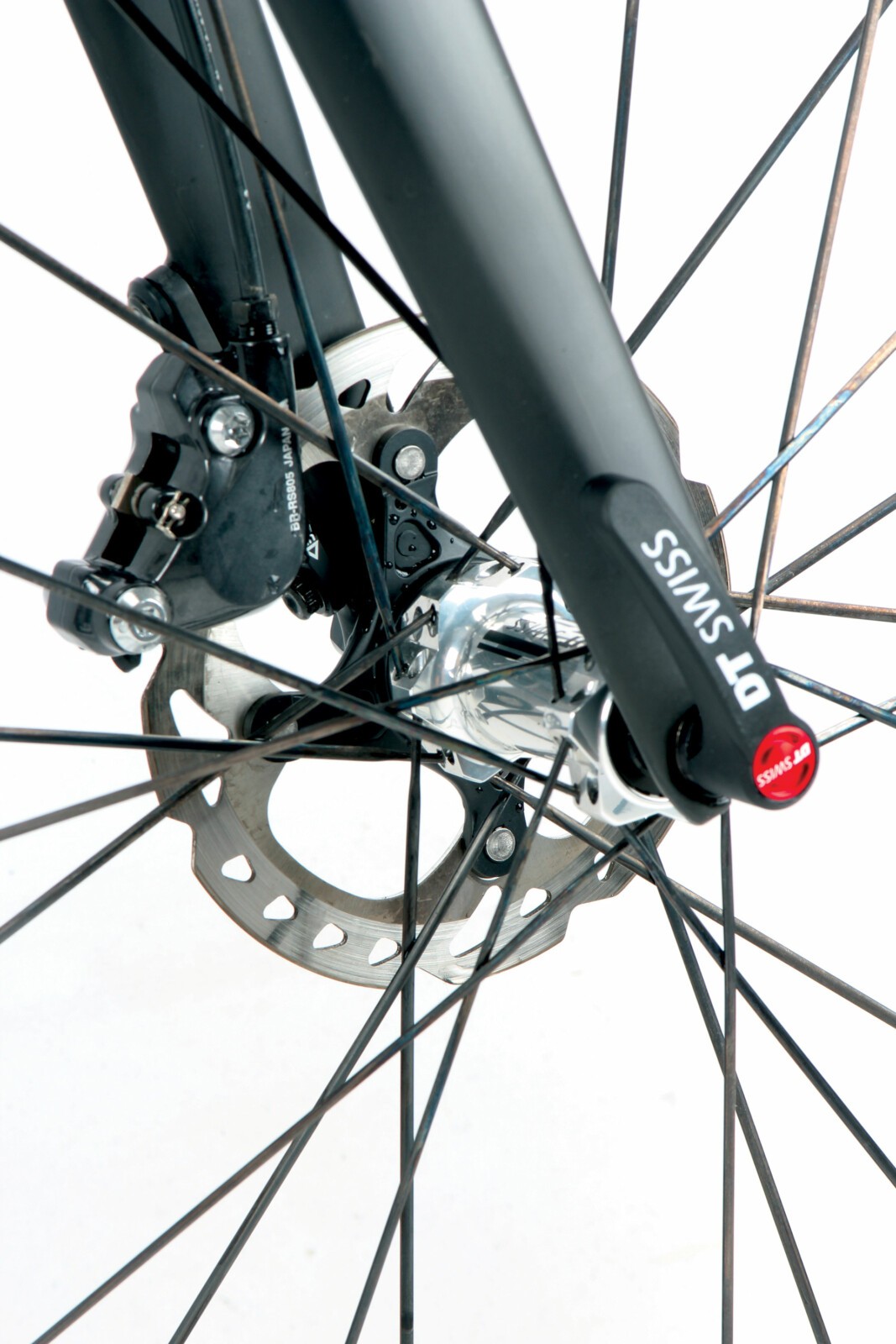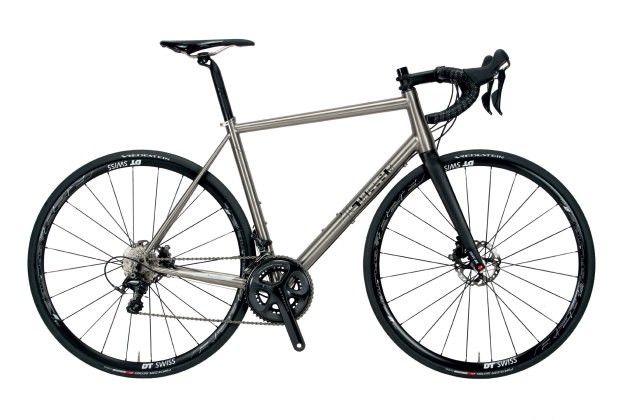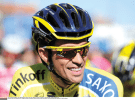It’s expected that bikes are categorised these days. Race, aero, sportive and so on, at least assuming that the bike is made from carbon. Steel, aluminum and titanium bikes are often lumped into materialsbased buckets of thought.
J Guillem exclusively use titanium for their frames, and they design each to suit the application. Although this is a new brand name; the man at the helm of J Guillem is Jan- Willem Sintnicolaa, the man who founded and built Van Nicholas bikes into a globally recognised brand. That company was sold a few years ago, but clearly Jan’s passion for the bike game was not included in the transaction.

Now residing in Mallorca (tough gig!), Jan’s local name is J Guillem, and hence this new venture is inspired by the roads and terrain of Jan’s adopted home. The Orient frame bares location coordinates, which I later discovered relate to a specific location on Mallorca (Orient), a popular climb and cafe area. All of the J Guillem frames follow this location/ name theme.
On first inspection of the Orient it’s clear that a lot of detail has gone into the frame. The headtube has a recessed logo, the dropouts are 3D cast titanium, and gear cables are internally routed. It’s far more than a collection of tubes welded together! The broad bladed carbon fork slides into a bulbous tapered headtube creating a smooth transition between the metal and composite shapes and a rigid steering structure. The Orient takes many cues from popular modern composite frame design. The skinniest titanium seatstays I’ve seen meet the seat tube just below the top tube junction, the down and top tubes are large diameter units and the whole bike is anchored by a press fit bottom bracket.
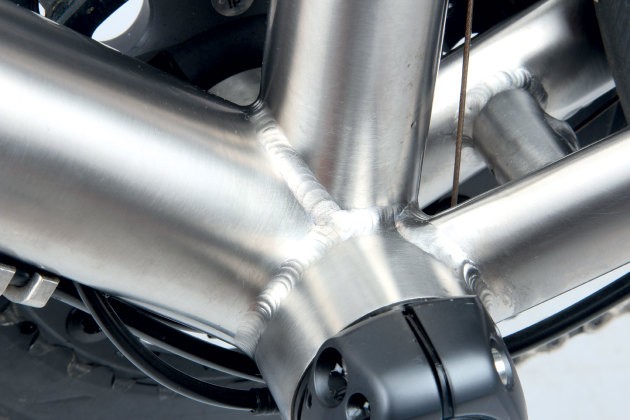
Seeing titanium and disc brakes in a non-race themed bike, I immediately thought of a soft riding frame ideal for long days of adventure and an appetite for unsealed roads. The kind of bike that you might choose to race Dirty Kanza or some other big dirt road race. After a few days of commuting I kitted up for a mini-adventure ride with a 50/50 split of dirt and sealed roads over 130km to see what the Orient was all about. The cruisey 30km stretch of tar to reach the dirt was right on point, the upright position of the Orient was ideal for this steady all-day tempo riding, allowing constant use of the drops and a contrasting relaxed position on the hoods. Smooth gravel was a breeze but once the road got rougher the Orient moved out of its comfort zone. I’d fallen into the categorise by material trap, assuming this bike would do things that it wasn’t designed for based solely on its material. Big tyres are the path to smooth riding on rough surfaces and I’d not paid close attention to this. The stock 28mm Vredestein tyres took up most of the available clearance to the point where a 30mm tyre would have to be really close to the limit of this frame. The Orient is not an all-road adventurer, it’s a dedicated road bike.
The large tube profiles and muscular fork give the Orient a firm ride. The classic metal bike twang and wind up is not present in the Orient chassis. The black fork, mid-depth black wheels and all black finishing kit look purposeful and strong which is exactly how the Orient rides. J Guillem has chosen to omit through axles from the list of modern inclusions but the Orient doesn’t suffer from this decision. We never experienced rotor rub and the fork tracks straight even under hard braking, and wheel options are easy to come by (at least for now).

The Orient has some quirks that I didn’t quite understand. The press fit bottom bracket offers the benefit of a wider bottom bracket shell and hence potentially wider spaced chainstays, yet the Orient’s stays are welded far inboard of the shells edges and the frame has the afore mentioned limited tyre clearance. Not far away there are the requisite mounting points for a mudguard (great) on the rear triangle but the fork has no mounting points. And as artful as it may look, the top of the seat tube is cut at an angle rather than flat. The only seat post clamp that will fit this frame is a custom J Guillem unit. If you strip the bolt you’ll have no chance of quickly picking up a spare.
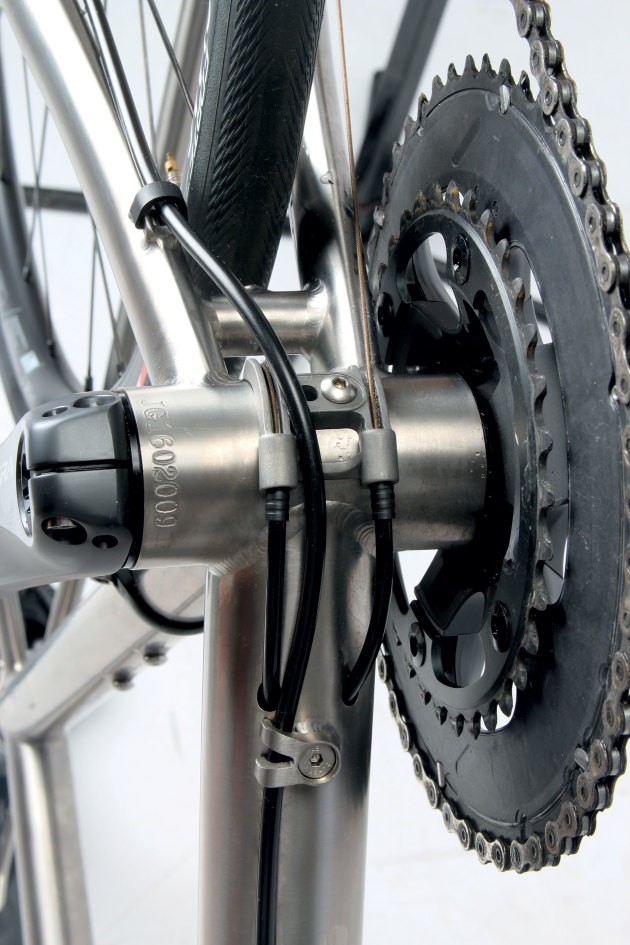
The Orient frame comes with a 100 year warranty, which is pretty cool. The idea is that this is a bike you keep for a long, long time. The finish of a titanium bike is pretty timeless and J Guillem even have an extensive care tips section on their website. The prospective rider needs to first think what they want before committing to the Orient. This isn’t a fast or quick feeling bike in the traditional road bike sense. Solid and stable with the ability to go long and smooth is the Orient’s sweet spot. Tyres need to stay relatively modest and the low bottom bracket and buzz reducing qualities inherent in the frame keep the Orient planted firmly on the road. It’s an ideal platform for weekend social speed riding or big miles tackled at a consistent pace. I’d rather take my regular carbon road bike on (for example) a week long supported 1000km ride. For the same ride over 10 days or more with stops at bakeries and small town pubs along the way, I’d choose the mellow and stable ride of the Orient every time.

SUMMING UP
Quality
The unique features and touches of the Orient are executed cleanly, the experience of the designer shows through. The fabricators have done a fine job too.
Performance
In the right situation the Orient is a delight. Long and steady is the name of the game.
Value
The Orient will polarise. At $6,500 for a complete or $3,000 for a frame, it’s a fair bit of coin but not unreasonable in the world of titanium. The longevity of titanium and the included warranty will be major draws for Orient riders.
Overall
The Orient is a unique and distinctive looking machine. It may offer a ride that challenges the expectation but that’s fine, that’s how it has been designed.
Despite being named after a specific region this bike is built to enjoy the world, one sealed road at at time.
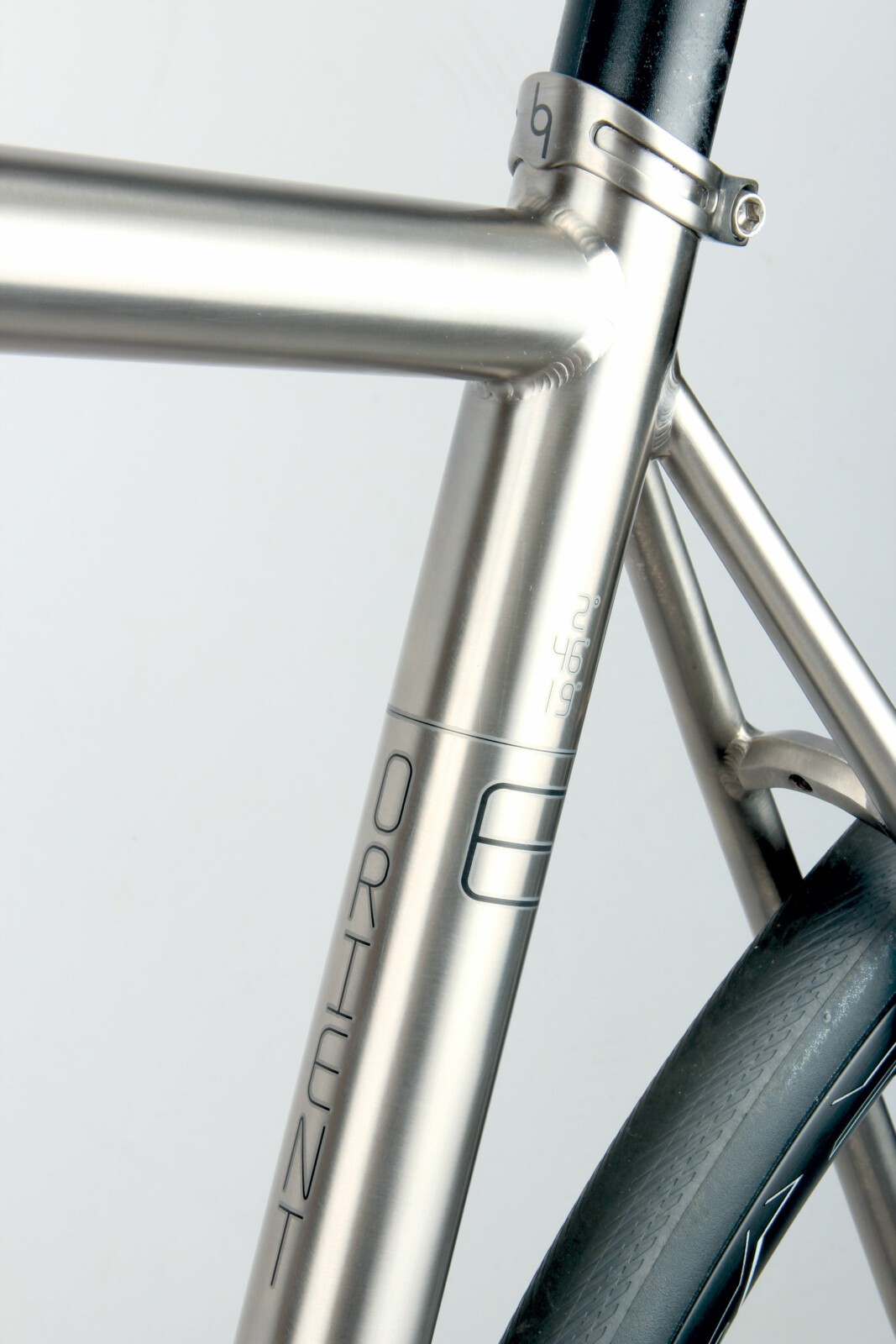
Specifications
FRAME: Seamless aerospace grade 3Al/2.5V Ti
FORK: Carbon 1 1/8 to 1 1/2 inch tapered steerer
SHIFTERS: Shimano R685 STI
FRONT DERAILLEUR: Shimano Ultegra 6800
REAR DERAILLEUR: Shimano Ultegra 6800
CRANK: Shimano Ultegra 6800
CASSETTE: Shimano Ultegra 6800 11-28
BOTTOM BRACKET: Shimano Ultegra 6800
WHEELS: DT Swiss R23 SPLINE
TYRES: Vredestein Fortezza Senso Xtrm 28mm
BRAKES: Shimano R805 Flat Mount
HANDLEBAR J.Guillem Alloy Compact
STEM: J.Guillem Alloy
HEADSET: Cartridge bearing
SADDLE: J.Guillem, ti rails
SEATPOST: J.Guillem Alloy
WEIGHT: 8.82kg
PRICE: $6,500
DISTRIBUTOR: Blue Globe Alliance
